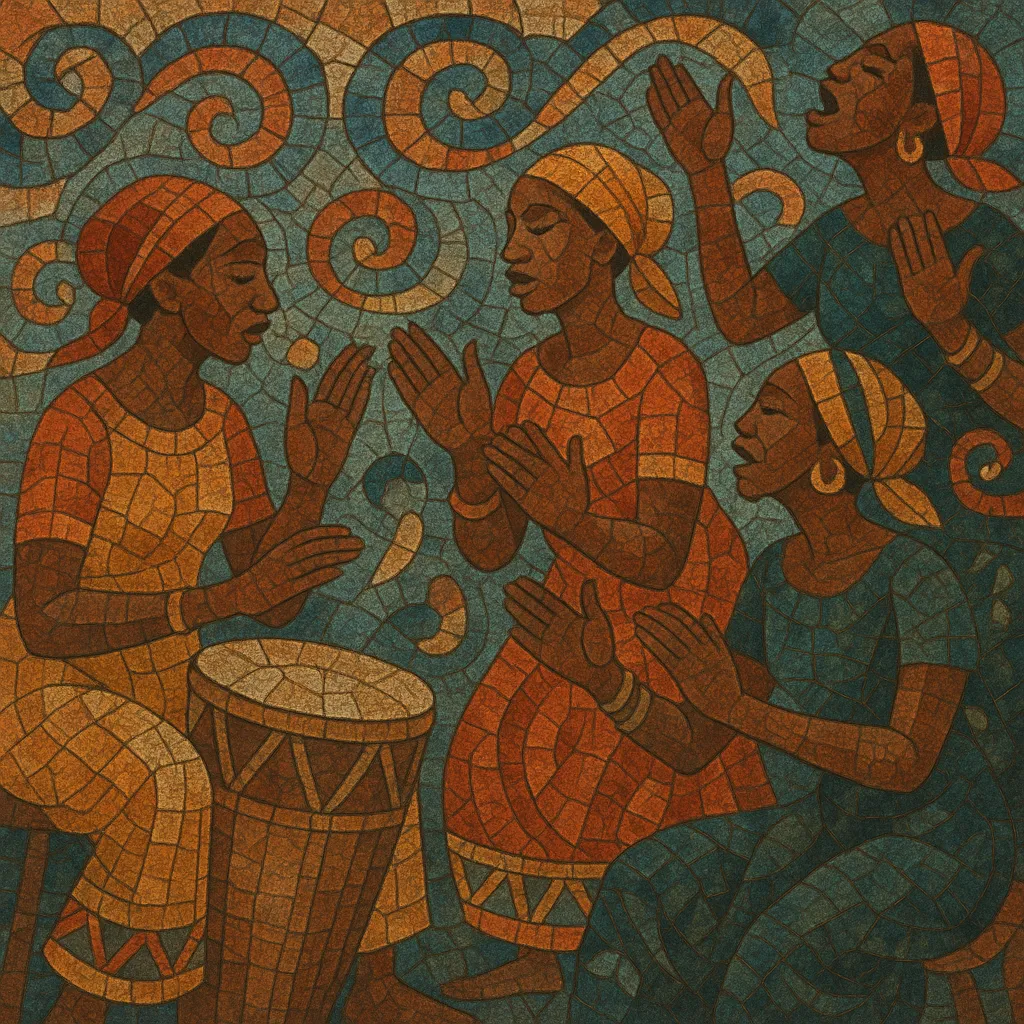Unyago is a Swahili coastal women’s music-and-dance tradition from Zanzibar and mainland coastal Tanzania, performed around initiation and pre-wedding rites. It doubles as communal entertainment and a form of embodied education, where senior women advise younger women about sexuality, intimate relationships, and life skills.
Musically it is percussion-driven, featuring interlocking hand-drum patterns, shakers, handclaps, and ululations that support call-and-response singing in Kiswahili. The grooves often sit in a lilting 6/8 or 12/8 feel, and melodies may carry Arab-influenced ornaments while staying largely modal and repetitive to sustain dancing. Performances are intimate, participatory, and celebratory, with dancers forming a circle and spotlighting soloists in turn.
Unyago is rooted in Swahili social life on the islands of Zanzibar (Unguja and Pemba) and the adjacent Tanzanian coast. As a rite-associated practice led by elder women, it predates commercial recording and the concert stage, and likely consolidated in recognizable form by the 1800s. Its core functions included celebration, instruction, and communal bonding during adolescence and marriage-related ceremonies.
From the late 19th to early 20th century, Zanzibar’s role as an Indian Ocean hub brought continuous cultural contact. While unyago remained a women-centered, percussion-led form, it existed alongside taarab orchestras and kidumbak small ensembles. The proximity of these styles fostered reciprocal influence: unyago songs adopted some Arab-influenced melismas and poetic devices, while kidumbak and other coastal ngoma reflected unyago’s earthy dance grooves and participatory format.
Urbanization, changing gender norms, and religious reformist movements periodically pressured intimate, ribald performance traditions like unyago. Yet it persisted in private settings and adapted to semi-public and staged contexts. The legendary Zanzibari singer Bi Kidude brought unyago repertoire and ethos to broader audiences in the late 20th century, reframing it as living heritage while retaining its pedagogical spirit.
Since the 1990s, festivals and cultural initiatives on the Swahili coast have showcased unyago as a vital tradition. Community troupes, cultural centers, and women’s groups continue to transmit the repertoire and dance vocabulary. Modern coastal genres such as kidumbak and, downstream, urban styles like mchiriku and singeli, echo unyago’s participatory energy, cyclical grooves, and call-and-response dynamism—even as they adopt new instruments and production techniques.


